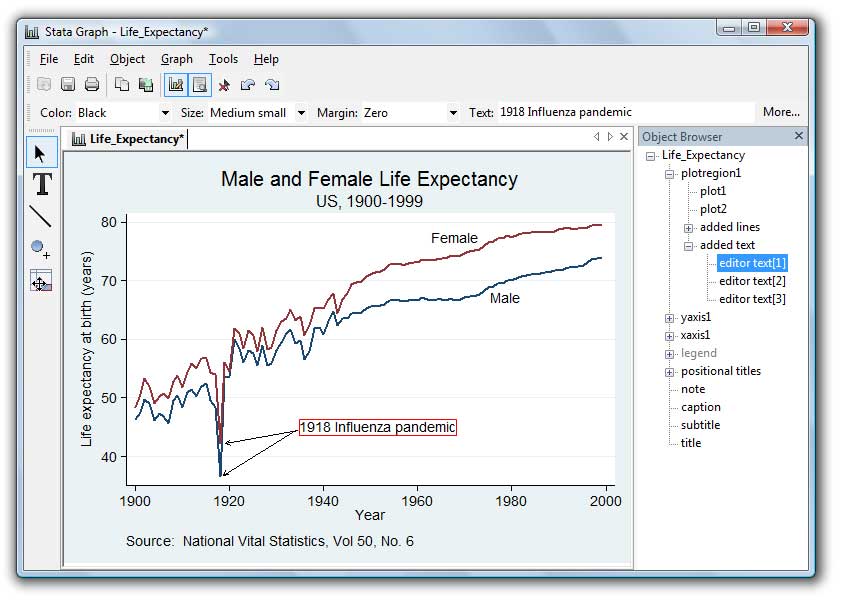
- #LINE GRAPH STATA PDF#
- #LINE GRAPH STATA DOWNLOAD#
- #LINE GRAPH STATA MAC#
- #LINE GRAPH STATA WINDOWS#
#LINE GRAPH STATA PDF#
While only the former will be displayed, the pdf version of the image will be stored in the Notebook and used when exported to PDF. To solve this problem, stata_kernel has the ability to hand Jupyter both the svg or png version of an image and the pdf version of the same image. However, as noted above, these images can't be included in a LaTeX PDF export without conversion.
#LINE GRAPH STATA WINDOWS#
One of the many amazing things about Jupyter Notebooks is that with a single click, you can export the notebook to an aesthetic PDF using LaTeX.Įxcept on Windows using Stata 14 or earlier, stata_kernel displays images in svg format by default. Stata_kernel lets you set the display format to be png, svg, or pdf.
#LINE GRAPH STATA MAC#
png files can't be created with the console version of Stata, and thus are off limits to the Linux and Mac (console) modes of stata_kernel.Sadly, there are considerable pros and cons to each image format: Stata_kernel must export the image in some format in order to load and display it. %set user_graph_keywords command1,command2.ĭuring the session. In order to force display of a graph, you can run: This means that if you prefix scatter with quietly, noisily, or capture, the graph won't be displayed. Stata_kernel looks for graph commands in your code, and requires that these be the first non-whitespace characters on a given line. To hide the display of a graph, just prefix graph with quietly. To minimize false positives, the graph keyword must appear at the beginning of a line.

The advantage of this approach is that it will display all graphs created, even inside a loop or program, as long as that program was defined in text you run with the kernel. Stata_kernel displays graphs by quietly inserting a graph export command after any command that creates a graph, and then loading and displaying the saved file.
#LINE GRAPH STATA DOWNLOAD#
If you download that file and load it into JupyterLab, you can edit the cells to try it out interactively. I recommend browsing this example Jupyter Notebook file to see many of stata_kernel's features in action. After installing and optionally configuring stata_kernel, it should be ready for use. It will work with any of the tools outlined in Using Jupyter.

I would really be pleased if someone could help me.Stata_kernel is the bridge between Stata and the Jupyter ecosystem. Unfortunately gen newvar = mean(oldvar) does not work and existĮgen also does not help me because I cannot replace with mean(var) the variable I created with the fucntion egen

I would like to have a graph who shows These Points (mean(yvariable1) if |xvariable=1) next Point (mean(yvariable2)|xvariable=1) (mean(yvariable2|xvariable=2) etc.Įxample: graph twoway line mean(yvariable1) xvariable if (.) || line mean (yvariable 2) xvariable if (.) I dont wont to have a scatter graph or a lfit line but I would like to generate a graph who shows the average of the different Levels for the x variable and combines These lines. Now I have many observations y with a given x. On the y axis I have 10 different variables with a each different scale and I on the x axis I have one variable which can have the values 1, 2, 3, 4 and 5 I have difficulties to create a line graph with averages from different observations.


 0 kommentar(er)
0 kommentar(er)
